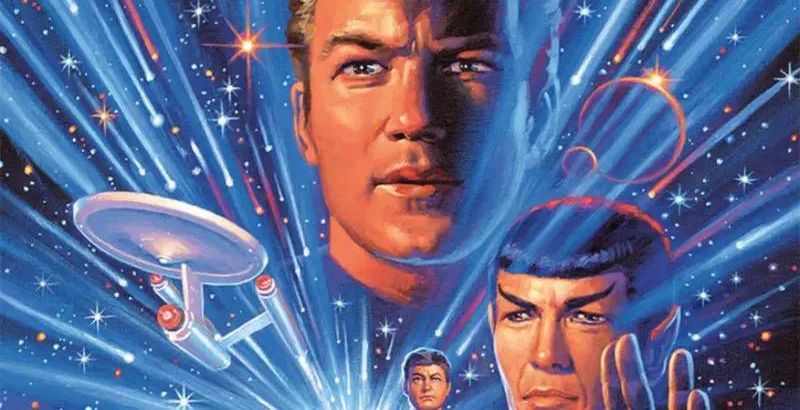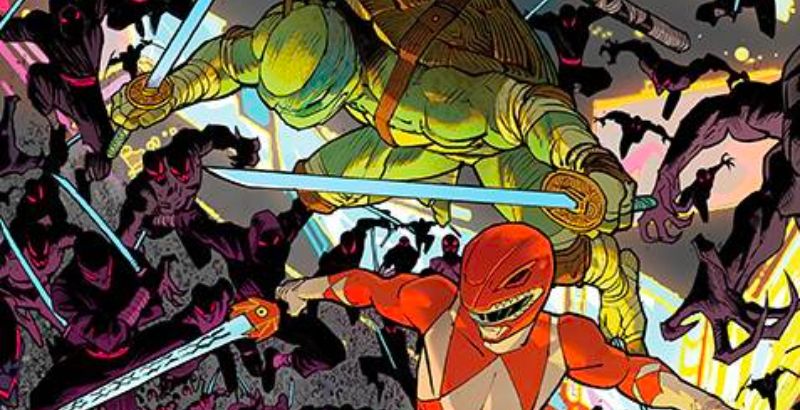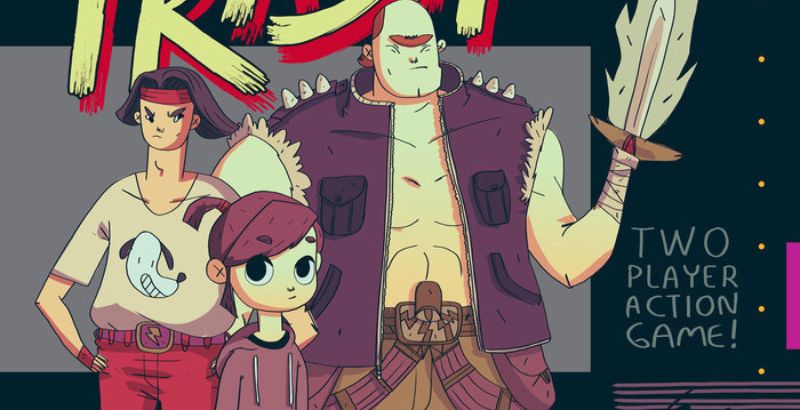
Star Trek: Year Five, Book One, written by Jackson Lanzing and Collin Kelly, Brandon Easton, and Jody Houser, illustrated by Stephen Thompson, Martin Coccolo, and Silvia Califano, colored by Charlie Kirchoff, Fran Gamboa, and Thomas Deer, and lettered by Neil Uyetake, is published by IDW Publishing. This series chronicles the exploits of James T. Kirk and his loyal crew as they undertake their final year of service on the U.S.S Enterprise. Complicating matters, Kirk has been offered the position of Admiral in Starfleet which leaves him feeling torn between his life of adventure on the Enterprise and finally retiring. The book is split into three separate “episodes”, each by a different creative team.
Episode One: “Odyssey’s End”
“Odyssey’s End,” by Lanzing, Kelly, Thompson, and Kirchoff, opens with a dire situation; Kirk sits alone on the bridge of the Enterprise, recording his final captain’s log as an unknown enemy holds a phaser to his head. We then turn the clock back to an earlier time, where the Enterprise responds to a distress signal on the planet Lloyd-Zeta 9 only to find the entire race of Tholians wiped out-save for one.
Lanzing and Kelly’s script gets the character mannerisms down pat, from Kirk’s determination to Spock‘s matter of fact observations, to McCoy’s general sense of disdain. Stephen Thompson’s –artwork comes extremely close to replicating the facial features of the original series crew. At times it feels less like reading a comic and more like actually watching an episode of Star Trek. Kirchoff, however, is the creative team’s MVP. His colors add to the vibrant, futuristic vibe of the Trek universe, especially in a scene where the Enterprise orbits a sun.
Episode Two: “Communication Breakdown”
“Communication Breakdown” by Easton, Coccolo, and Gamboa, finds the Enterprise stumbling upon several damaged ships, all hailing from the planet Sigma Iotia II which was last seen in the Original Series episode “A Piece of The Action.” After McCoy left his tricorder on the planet, the citizens used it to develop a democracy, moving from adopting the culture of 1920’s Chicago to more modern society; or rather, as modern as the 21st century would be in the Trek universe. While McCoy, Kirk, and Spock try to deal with the fallout of their actions, Scotty and Uhura must deal with a mutiny and damage to the Enterprise.
“Communication Breakdown” was the episode I was least impressed with, in part because it felt the least friendly to new readers. The first episode felt like a proper introduction to the world of Trek but here, the main conflict is tied to an episode of the original series and you would have to watch it to have the proper context for this world. That aside, Easton’s script manages to wring some genuine emotion out of the proceedings, particularly in a moving conversation between Kirk and McCoy about the former’s relationship with his son. Likewise, Coccolo and Gamboa bring a polished feel to their art; while it isn’t as spot-on as the first episode it still manages to capture the Star Trek aesthetic. One scene, in particular, finds Scotty, Uhura, and Sulu facing off against a mutinous crew, the ominous hues of the Red Alert underlining the tension between both parties.
Read Our Review Of Star Trek: Strange Worlds Here.
Episode Three: “The Truth Artifact”
The final episode, by Houser, Califano, and Deer, sees the Enterprise crew collecting archeological samples on the planet Hesperides I. However, one of the artifacts begins to interfere with the thoughts of the crew, causing a breakdown in communication and discord among friends and crewmates. Meanwhile, Uhura struggles to find a way to communicate with a Tholian child the crew took custody of in episode one.
Houser fully understands that the biggest lesson of Star Trek is pushing past the barriers that surround you and bettering yourself. Here she finds a way to challenge that with the communication barrier between Uhura, and Bright Eyes, the Tholian child and the Hesperides artifact disrupting the crew’s bond. The solution she comes up with is equally brilliant and hearkens back to the series’ roots of thinking your way out of the problem. Califano’s artwork favors close-ups of the characters’ faces, which helps the audience relate to them; she also draws Bright Eyes in childlike postures to underline his relative youth.
The first volume of Star Trek: Year Five manages to deliver classic Trek tales in comic form, utilizing a wealth of creative talent to do so. Trek fans old and new will definitely want to pick this book up.
Star Trek: Year Five is available where comics are sold
Star Trek: Year Five
TL;DR
The first volume of Star Trek: Year Five manages to deliver classic Trek tales in comic form, utilizing a wealth of creative talent to do so. Trek fans old and new will definitely want to pick this book up.







